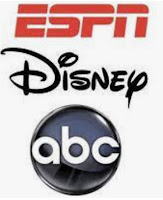➦In 1920...KNX Los Angeles began broadcasting as 6ADZ. Although KNX received its first formal broadcasting station license on December 8, 1921, the station has traditionally dated its founding to September 10, 1920, starting with broadcasts conducted by Fred Christian over his amateur station, 6ADZ. Christian was a former shipboard radio operator, who later explained that he began the broadcasts in order to provide something to listen to by customers who had constructed receivers from parts purchased at the store. Christian began making broadcasts with a five-watt vacuum-tube transmitter, operating on the standard amateur wavelength of 200 meters (1500 kHz).
 |
| KNX - 1925 |
Initially there were no specific standards in the United States for radio stations making transmissions intended for the general public, and numerous stations under various classifications made entertainment broadcasts. However, effective December 1, 1921, the Department of Commerce, regulators of radio at this time, adopted a regulation that formally created a broadcasting station category, and stations were now required to hold a Limited Commercial license authorizing operation on wavelengths of 360 meters for "entertainment" broadcasts or 485 meters for "market and weather reports" (833 and 619 kHz). By the end of 1922 over 500 stations would be authorized nationwide.
On December 8, 1921, the Electric Lighting Supply Company was issued a broadcasting station license with the randomly assigned call letters KGC, authorizing operation on the 360 meter entertainment wavelength. The station's location was listed as Fred Christian's Harold Way home. The shared 360 meter wavelength required times-haring agreements between an increasing number of stations needing exclusive time periods. On May 4th the Los Angeles Times reported that a total of seven local stations were slated to make broadcasts that day, comprising a schedule that ran from noon to 9:00 p.m., with KGC assigned 2:00-2:30 and 7:30-8:00 p.m.
 |
| KNX Request Line Operator |
On May 4, 1922, the Electric Lighting Supply Company was issued a broadcasting license for a station with the randomly assigned call letters of KNX, also on 360 meters. This was technically considered to be a second station in addition to KGC, however, after KGC was formally deleted on June 20, 1922, the Department of Commerce concluded that KGC and KNX were functionally the same station, and Federal Communications Commission (FCC) records list December 8, 1921 as KNX's "date first licensed".
The new authorization coincided with preparations for a move to the California Theater, with Fred Christian continuing as station manager. On June 12, 1922 the Los Angeles Times reported that "After more than two months of preparation, the new broadcast station at the California Theater had its opening program Saturday evening at 9:15, sending out a wavelength of 510 meters [588 kHz].
 |
| Bob Crane - 1960 |
In early 1928 KNX changed owners and was then operated by the Western Broadcast Company. In 1929 the station's transmitter power was upgraded from 500 to 5,000 watts, followed by an increase to 10,000 watts in 1932. In 1933, the station moved its studios to another part of Hollywood, after being granted permission by the FRC on June 7, 1932, to raise its output to 25,000 watts. The following year, KNX's transmitting power was raised to the nationwide maximum of 50,000 watts, which the station continues presently.
CBS purchased KNX in 1936 and began operating it as its West Coast flagship, which ended CBS's eight-year affiliation with KHJ. In 1938, the CBS Columbia Square studios were dedicated for KNX as well as West Coast operations for the entire CBS radio network. That October, the station carried Orson Welles' celebrated version of The War of the Worlds. In March 1941 the station was shifted to 1070 AM as part of the North American Regional Broadcasting Agreement assignments, where it has been ever since.
In 2009, KNX adopted the slogan "All news, all the time." It was previously used for 40 years by KFWB, KNX's historic rival in the news radio wars before both became sister stations through the 1995 merger of Westinghouse Electric (KFWB's owner) and CBS. KFWB's format change to news-talk in September 2009 (and currently as a Regional Mexican station) now leaves KNX the only all-news outlet in the Los Angeles area, which is now emphasized in its alternate slogan, "Southern California's only 24-hour local news & traffic station".On February 2, 2017, CBS agreed to merge CBS Radio with Entercom (now Audacy). The merger was approved on November 9, 2017 and consummated 8 days later.
➦In 1933…Early radio entertainer Jimmy Durante first appeared Eddie Cantor's "Chase and Sanborn Hour" with Eddie Cantor.
➦In 1935…The radio program "Popeye, the Sailor," debuted on NBC Red Network as a 15 minute, three-times-a-week feature. But instead of spinach giving him strength (as in the comics and cartoons), it was the sponsor’s breakfast cereal Wheatena. “Wheatena’s me diet / I ax ya to try it / I’m Popeye the Sailor Man”.
➦In 1945...KLS 1310 AM changed its call letters to KWBR and changed its format to focus on an African-American audience. In 1959, it was bought by the owners of Memphis radio station WDIA, and the call letters were changed to KDIA. During the 1960s through the 1980s, the station was the premier soul and funk station in the San Francisco Bay Area. The station helped launch the careers of such musicians as Sly and the Family Stone. Its tagline at that time was "KDIA, Lucky 13."







































